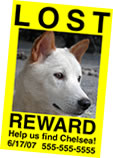For most pet owners adding a pet to the family is a permanent decision, but there are times when unexpected circumstances can make caring for a pet difficult. At Adopt-a-Pet.com, we believe that every pet deserves a loving home, but we’re realistic that not every home is right for every pet.
Every year, millions of pets find themselves needing new homes. Often times owners find themselves in financial hardship or they are forced to relocate to an area that is not pet friendly. There are many circumstances that lead pet owners to consider rehoming their pet, but safe options for finding their companions a loving new home have been limited. Everyday, we were seeing pets surrendered to overcrowded animal shelters and rescues or posted on dangerous classifieds sites like Craigslist. This had us thinking that there had to be a better alternative. Now, there is!
Rehome by Adopt-a-Pet.com and the Petco Foundation is the safe, reliable, and free way to find a loving home for your pet. Rehome is a peer-to-peer adoption service that allows pet owners to post pets needing new homes on Adopt-a-Pet.com to be seen by the millions of adopters who visit our site each month. Rehome also provides pet owners with all of the tools and guidance they need to screen applicants and choose the right new family for their pet. We can even help to set up safe meet and greets with potential adopters at well-lit, public places like Petco stores. Additionally, 100% of the adoption fee the new owner pays is donated to a local animal shelter or rescue!
“Adopt-a-Pet.com has extensive experience in helping pets from our network of over 17,000 animal shelters and rescues to find new homes,” said Abbie Moore, Adopt-a-Pet.com Executive Director and Chief Product Officer. “Now, with Rehome by Adopt-a-Pet.com and the Petco Foundation, we bring our deep knowledge and understanding of the pet adoption process to pet owners in crisis – keeping more pets from entering shelters and giving owners peace of mind that their pets are happily and safely joining new families.”
In addition to guiding users through the process of safely rehoming a pet, Rehome also provides guidance to pet owners who wish to explore solutions that would allow them to keep their pet. For example, users can easily access valuable information around troubleshooting behavioral issues, finding pet friendly housing and accessing affordable veterinary care.
“Rehome is a win for everyone involved, pet owners needing help, pets, adopters and animal shelters throughout the country; and we are proud to join forces with Adopt-a-Pet.com to make this happen,” said Susanne Kogut, Petco Foundation’s Executive Director. “At the Petco Foundation we believe that when we develop innovative solutions and empower communities to participate and help in saving animal lives, we will create life saving communities everywhere and assure that every pet has a loving home.”
For more information on this groundbreaking and innovative service developed in collaboration with the Petco Foundation, visit rehome.adoptapet.com.


 The Best Option: Prevent Your Pet From Getting Lost
The Best Option: Prevent Your Pet From Getting Lost We cannot stress this enough…get your pet MICROCHIPPED. If you adopt an already-microchipped pet, send in the paperwork and get the chip registered in your name. In case your pet’s ID tag falls off, this is your one chance to make sure your pet will be returned to you. If you move or change your phone number, make sure to contact the microchip company right away to notify them of your new information.
We cannot stress this enough…get your pet MICROCHIPPED. If you adopt an already-microchipped pet, send in the paperwork and get the chip registered in your name. In case your pet’s ID tag falls off, this is your one chance to make sure your pet will be returned to you. If you move or change your phone number, make sure to contact the microchip company right away to notify them of your new information.
 3. How often does my pet need a checkup?
3. How often does my pet need a checkup? Like this article? Feel free to post it on your site!
Like this article? Feel free to post it on your site!



